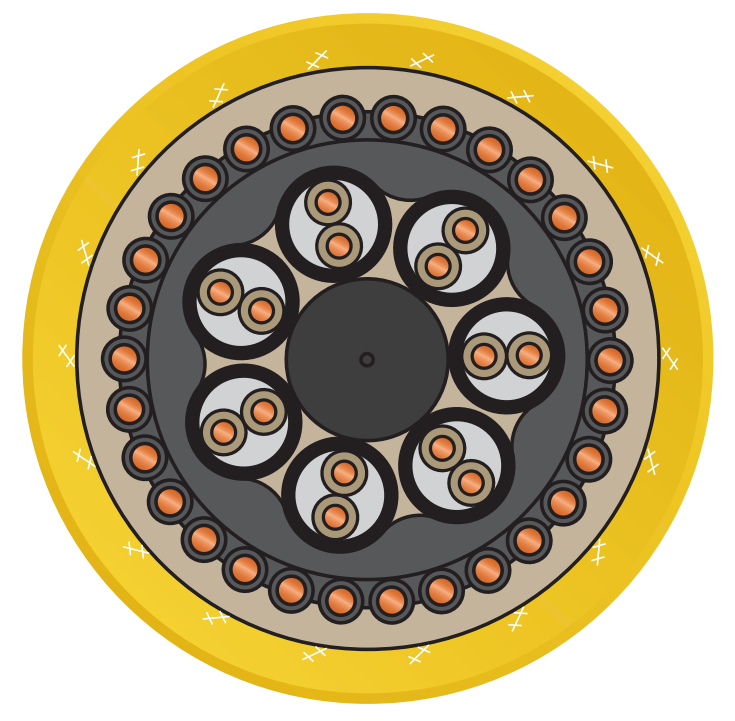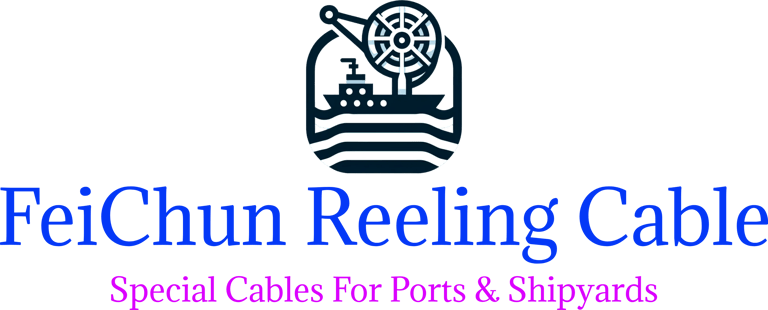What is NSHTÖU-J/O Cable?
In industrial and maritime environments, NSHTÖU-J/O cables are indispensable for ensuring efficient and safe operations. These specialized cables are engineered to handle extreme conditions, providing exceptional durability, flexibility, and reliability. Designed for mobile and flexible applications, these cables have become a cornerstone in industries like maritime operations, port terminals, and heavy industrial machinery. This guide unpacks everything you need to know about NSHTÖU-J/O cables, from their unique composition to their critical applications, installation practices, and future trends.
9/19/20213 min read


1. Introduction to NSHTÖU-J/O Cables
1.1 Cable Designation Demystified
Understanding the meaning behind NSHTÖU-J/O helps explain its capabilities and applications:
N: Designed for outdoor use.
S: Indicates a special rubber or synthetic insulation.
H: Heat resistance for extreme conditions.
T: A special rubber compound for enhanced flexibility and durability.
Ö: Resistance to oil and chemical exposure.
U: Universal suitability for dynamic and mobile applications.
J/O: Indicates whether the cable includes a protective conductor (J) or is without it (O).
This breakdown highlights why NSHTÖU-J/O cables excel in dynamic, high-stress environments like ports and shipyards.
1.2 Historical Context of Cable Development
With the rise of mobile machinery in maritime and industrial sectors, standard cables struggled to meet performance demands. This led to the development of NSHTÖU cables, combining advanced material science and engineering to withstand mechanical stress, chemical exposure, and continuous movement.
2. Technical Composition and Engineering
2.1 Structural Anatomy
NSHTÖU-J/O cables are constructed with advanced materials that ensure durability and flexibility:
Core Conductor: High-quality copper for excellent electrical conductivity.
Insulation: Heat-resistant rubber or synthetic compounds for superior electrical safety.
Protective Sheath: Oil-resistant, UV-stable outer layers to shield against environmental hazards.
These components work together to deliver optimal performance in demanding conditions.
2.2 Material Science Innovations
Rubber Compounds: Provide high flexibility and resistance to wear and tear.
Oil Resistance: Protects cables from industrial lubricants and chemicals.
Temperature Performance: Operates efficiently across a wide temperature range.
2.3 Electrical Characteristics
Voltage Rating: Designed for medium- to high-voltage systems, typically up to 1 kV.
Current Carrying Capacity: Sufficient to power heavy machinery without overheating.
Impedance and Resistance: Optimized for efficient energy transmission.
3. Environmental Performance Criteria
3.1 Harsh Environment Resilience
NSHTÖU-J/O cables excel in environments with:
Saltwater exposure: Their outer sheath resists corrosion.
UV Radiation: Designed to withstand prolonged sunlight exposure.
Temperature Extremes: Operates efficiently in both freezing and scorching conditions.
Mechanical Stress: Maintains integrity under constant movement and load.
3.2 Chemical and Mechanical Resistance
Built to endure:
Oil and grease common in industrial settings.
Abrasion from repeated movement.
Flex fatigue, allowing thousands of cycles without cracking or wear.
4. Application Domains
4.1 Maritime and Port Operations
NSHTÖU-J/O cables power essential equipment in maritime settings, including:
Container handling cranes.
Ship-to-shore systems.
Automated Guided Vehicles (AGVs).
4.2 Industrial Use Cases
These cables are also pivotal in:
Mobile machinery such as excavators and conveyors.
Offshore oil platforms, where resistance to environmental stress is critical.
Heavy industrial settings, requiring robust electrical connections.
5. Performance Optimization Strategies
5.1 Installation Best Practices
Proper installation enhances cable lifespan and performance:
Ensure correct bend radius during routing.
Avoid overloading cables beyond their rated capacity.
Protect cables from sharp edges and excessive tension.
5.2 Maintenance and Diagnostic Approaches
To maximize service life:
Conduct regular inspections for wear and damage.
Use predictive maintenance tools to identify issues before failures occur.
Replace connectors and fittings as needed to ensure electrical integrity.
6. Comparative Analysis
6.1 Competitive Cable Technologies
Compared to standard cables, NSHTÖU-J/O cables offer:
Superior flexibility.
Enhanced durability under mechanical stress.
Longer service life in harsh environments.
6.2 Technology Differentiation
Innovative features include:
Advanced rubber compounds for oil resistance.
Optimized flex life, ensuring reliability under continuous movement.
7. Safety and Compliance
7.1 Regulatory Landscape
These cables comply with stringent safety standards, including:
IEC 60245 for flexible rubber cables.
Maritime-specific regulations ensuring protection against electrical hazards.
7.2 Risk Mitigation
Electrical Fault Prevention: Insulated cores reduce short-circuit risks.
Mechanical Failure Avoidance: High tensile strength prevents breakage.
8. Economic Impact Analysis
8.1 Total Cost of Ownership
While NSHTÖU-J/O cables may require a higher initial investment, they offer:
Reduced downtime due to fewer failures.
Lower maintenance costs over their lifespan.
8.2 Productivity Enhancement
Enhanced reliability reduces disruptions.
Their durability ensures consistent power delivery to critical equipment.
9. Troubleshooting and Problem Resolution
9.1 Common Failure Modes
Failures typically result from:
Excessive mechanical stress.
Improper installation or routing.
Environmental wear, such as UV or oil exposure.
9.2 Practical Solutions
Replace cables showing visible damage.
Conduct periodic electrical tests to ensure performance remains optimal.
10. Future Technological Trends
10.1 Emerging Innovations
Advancements in NSHTÖU-J/O cable technology include:
Smart monitoring systems to predict and prevent failures.
Self-healing materials that repair minor damages autonomously.
10.2 Predictive Technology Roadmap
Growing integration with Industry 4.0 technologies.
Development of sustainable materials for environmental protection.
Conclusion
NSHTÖU-J/O cables are an essential solution for industries demanding high flexibility, mechanical durability, and environmental resistance. By understanding their structure, applications, and maintenance strategies, you can ensure optimal performance in maritime and industrial settings.
Investing in these advanced cables not only reduces downtime but also enhances operational efficiency.
